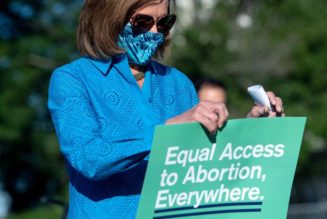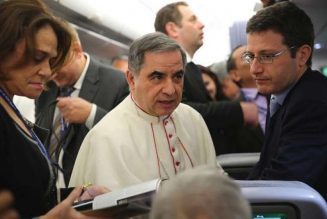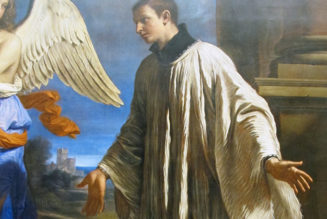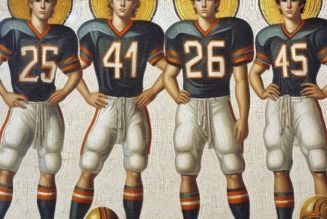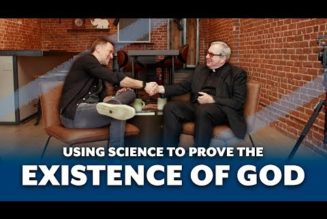 |
“Where is the road which leads us to Jesus Christ? It is before our eyes: it is the Church. It is our duty to recall to everyone, great and small, the absolute necessity we are under to have recourse to this Church in order to work out our eternal salvation.” — Pope Saint Pius X
“I wonder what Pius X would do if he were pope today,” I said, chatting with a friend one afternoon about all the things Catholics try to keep their eye on—Pope Francis, pandemic safeguards, violent protests, political turmoil, and the rest of it. My friend surprised me with his response. “I bet he’d put chains on the doors of every church until he cleaned house,” he said.
I wonder.
Though we have not seen chains on our church doors due to “housecleaning,” we have seen them due to “health and safety.” I wonder if Pius X would have been complicit with this course of action. There is certainly precedent for such closures—Saint Charles Borromeo, for instance, locked up the churches in the archdiocese of Milan when the Plague hit hard in the 1570s. Like Saint Charles, Saint Pope Pius X was a reformer, and though he might have closed the church doors against a pandemic, his overall papal strategy was to open the Church’s doors to the extremity of their hinges rather than shuttering them against the storm. “Let the storm rage and the sky darken,” he said, “not for that shall we be dismayed.” The world has changed a great deal in the last hundred years, but Pius X remains a real and relevant role model for us.
When Giuseppe Melchiorre Sarto assumed the Chair of Peter in 1903—having worked hard and humbly with his hands, head, and heart among the simple, sturdy folk of God—he rolled up his cassock sleeves to grapple the beginnings of the cultural upheaval we all live with today. Pius X was seen as a fresh change from his austere and imperial predecessor, Leo XIII, and he began a fresh perspective for the Church—not unlike the initial reaction to Pope Francis. What was marvelous about Pius X, though, is that he carried out his duties in the Holy See as though he were a parish pope.
This uncommon priest of common sense beheld a horde of “isms” rushing to reform the world and the Church—liberalism, utilitarianism, relativism, skepticism, secularism, rationalism, socialism, indifferentism, and materialism, to name a few. Pius X took stock of the lot and gave them all one name—modernism. And as a remedy, he proposed his own “ism”: the catechism. He established the Confraternity of Christian Doctrine, requiring all parishes to teach the catechism to children and bolster the Church against heresy.
He also allowed children to receive Holy Communion, instead of at Confirmation as young adults, while encouraging all Catholics to receive the Eucharist frequently, even daily, calling it the “shortest and safest way to Heaven.” In a clear return to the source of Catholic life, Pius X vigorously promoted the Sacraments to help the Church awaken to a new life of grace. This was—and still is—the only way for Catholics to prepare for spiritual warfare and to wage it in any sustained way.
Spiritual rejuvenation was a hallmark of Pius X’s papacy as he oversaw a revision of the liturgy, the liturgical calendar, and the priestly breviary, encouraging the faithful to turn to prayer with more intention and devotion to combat the errors of the age. He upheld the code of Canon Law, giving more scholarship and authority to papal government, while holding his ground against the pressures and prejudices of secular governments. Pius X preached a homily every Sunday, and, whenever he managed to give his Swiss guards the slip, he would go unaccompanied to hospitals near the Vatican to visit the sick.
❧
Some Catholics, in fact, lay part of the need for that restoration at the feet of Pius X. These argue that Pius X started the indiscriminate rush to the altar rail we see today, where Catholics have largely lost the sense and understanding of the Real Presence. These argue that his allowance for children making their First Holy Communion left Confirmation out of its true sacramental context. These argue that his revision of the breviary was flawed and that his worthy reforms to sacred music failed in implementation.
To these I say that, whatever his shortcomings, Pius X reminds us of the importance of simple, spiritual solutions in a complex, secular age.
In resisting liberal bents in both theology and politics and held to tradition to secure ecclesial autonomy, Pius X resisted the pressure to see Church and State fully and finally separated. Though he was a simple man of peasant background, Pius knew that the memory of the glory of Christendom was fading, perhaps even forgotten. He decided, therefore, that moving forward with the times was not as important as going back to basics. So, he flung wide the floodgates of grace when he saw God’s people languishing. He did not close the Church when the Church was needed, and he probably would have done similarly facing persecution or war—or perhaps even a pandemic.
The chains we have seen on our church doors have sent something of a challenge to Catholics—and one that Pius X’s papacy can help us rise to meet. When fear shoulders out faith, and our socio-economic lives are assigned a higher value than our spiritual lives, it downplays the essential aspect of the Sacraments and divine worship. The example of Pius X exhorts all Catholics, laity and clergy alike, to focus on Holy Mass and not just mass health. When first things are put first without fear, God takes care of the rest. “The greatest obstacle in the apostolate of the Church,” Pius X taught, “is the timidity or rather the cowardice of the faithful.”
With World War I in the wings, Pius X fell ill and passed away on August 20, 1914, his will stating, “I was born poor, I lived poor, I die poor.” True as that was, Pius X left behind a rich legacy that resounds with his pontifical motto, “To Restore All Things in Christ.” Our world and our Church may not be the world and Church of Pius X, but the world and the Church is always in need of restoration. And that isn’t a bad thing. Christ came to make all things new just as He resurrected His own Body, making it possible for the members of His Mystical Body to restore themselves in Him. Given the current state of affairs, it is not hard to agree that the Church—and the world, for that matter—could use a good restoration.
Pius X reminds us of the importance of simple, spiritual solutions in a complex, secular age. It was Pius X, after all, who began a fifty-year period of the Church standing strong and united in morals and doctrine, especially against the rise of Nazism and Communism. And perhaps Pius X’s severe treatment of Modernists only drove them underground to muster until the Second Vatican Council. Still, it cannot be denied that a little catechism can go a long way, as Pope St. John Paul II knew well.
Today, we have our own horde of ideologies to face and fight. It is in these periods of darkness and doubt that we look for inspiration from the saints who dealt with what we are dealing with in some analogous way. The key to the future has always been the past. The heresy of modernism is not dead.
So, what would Pius X do?


